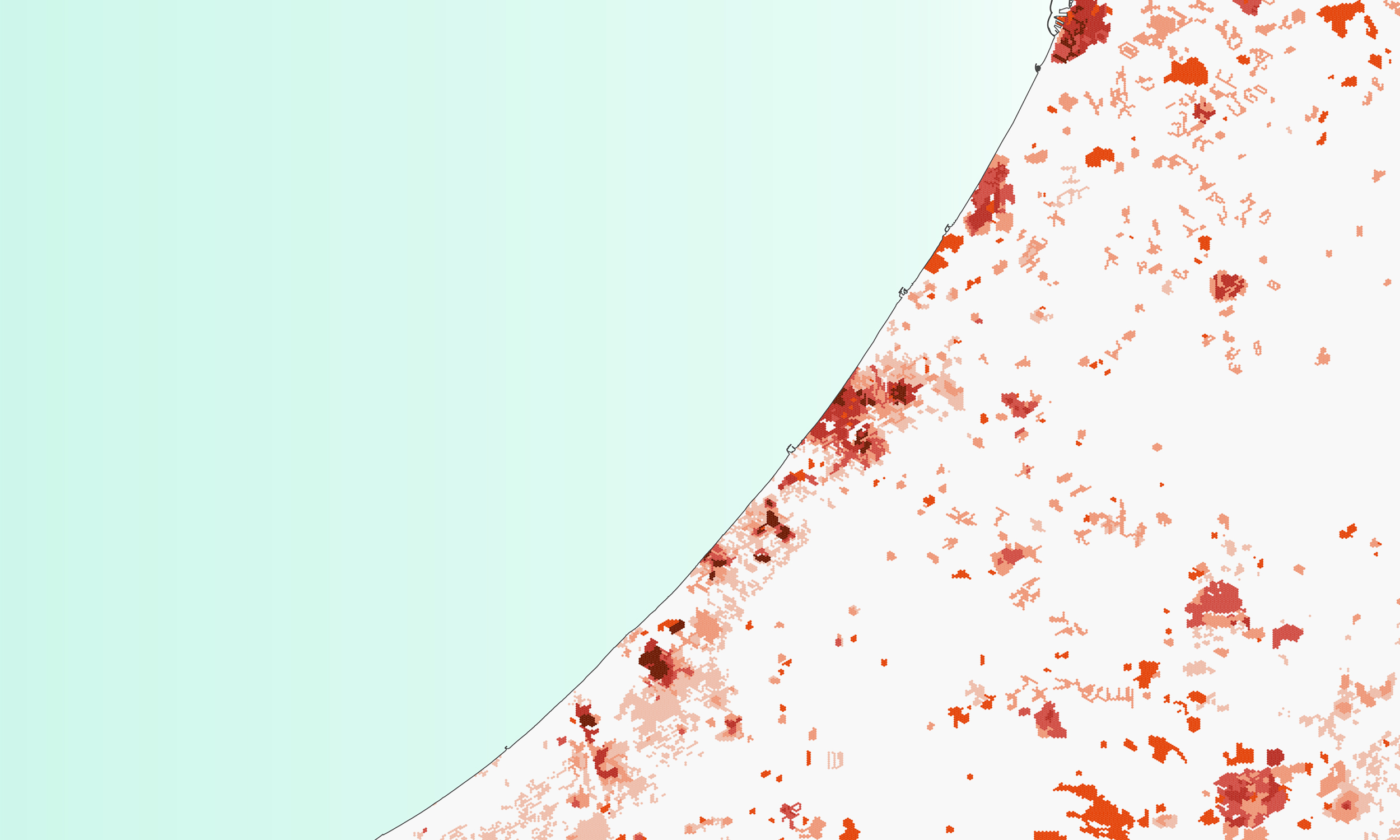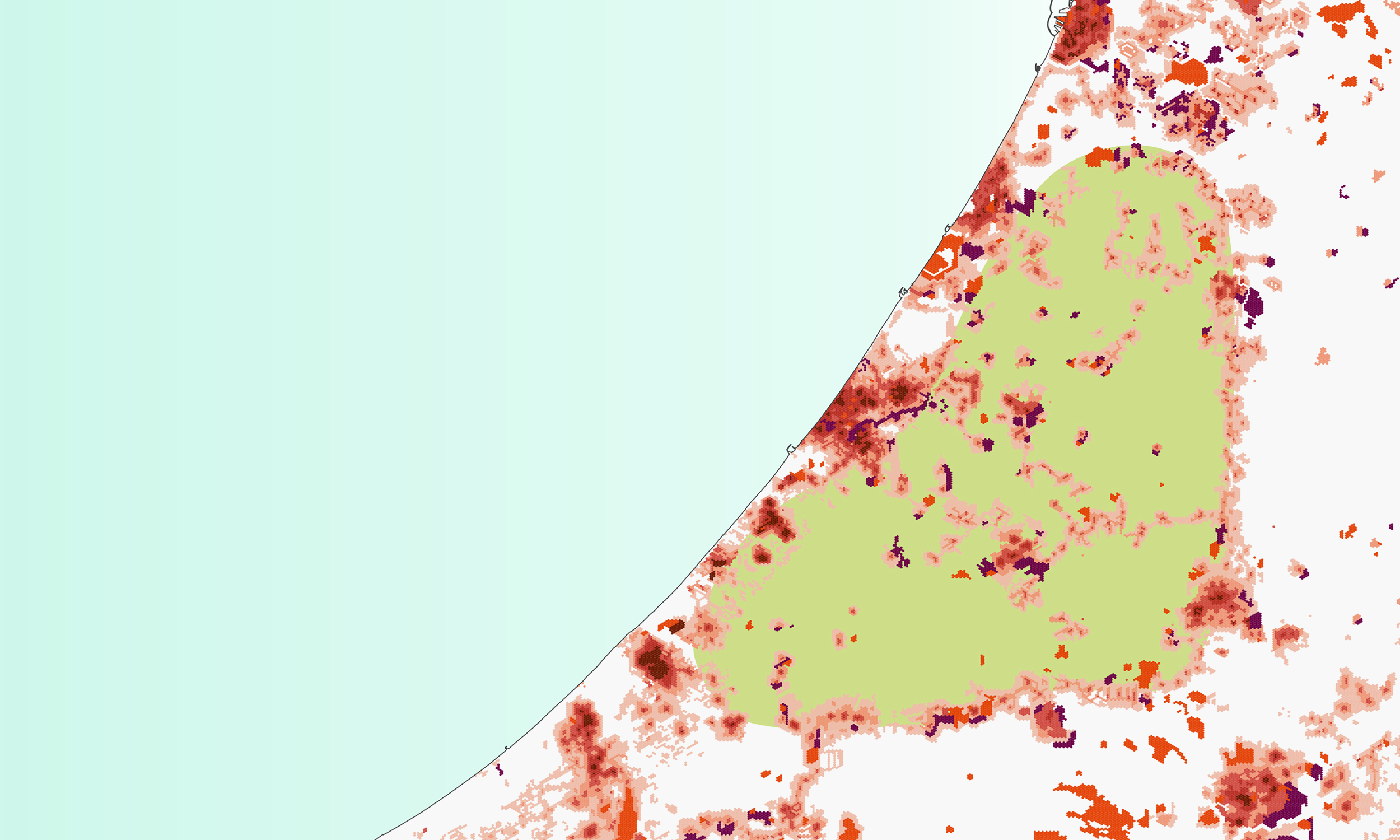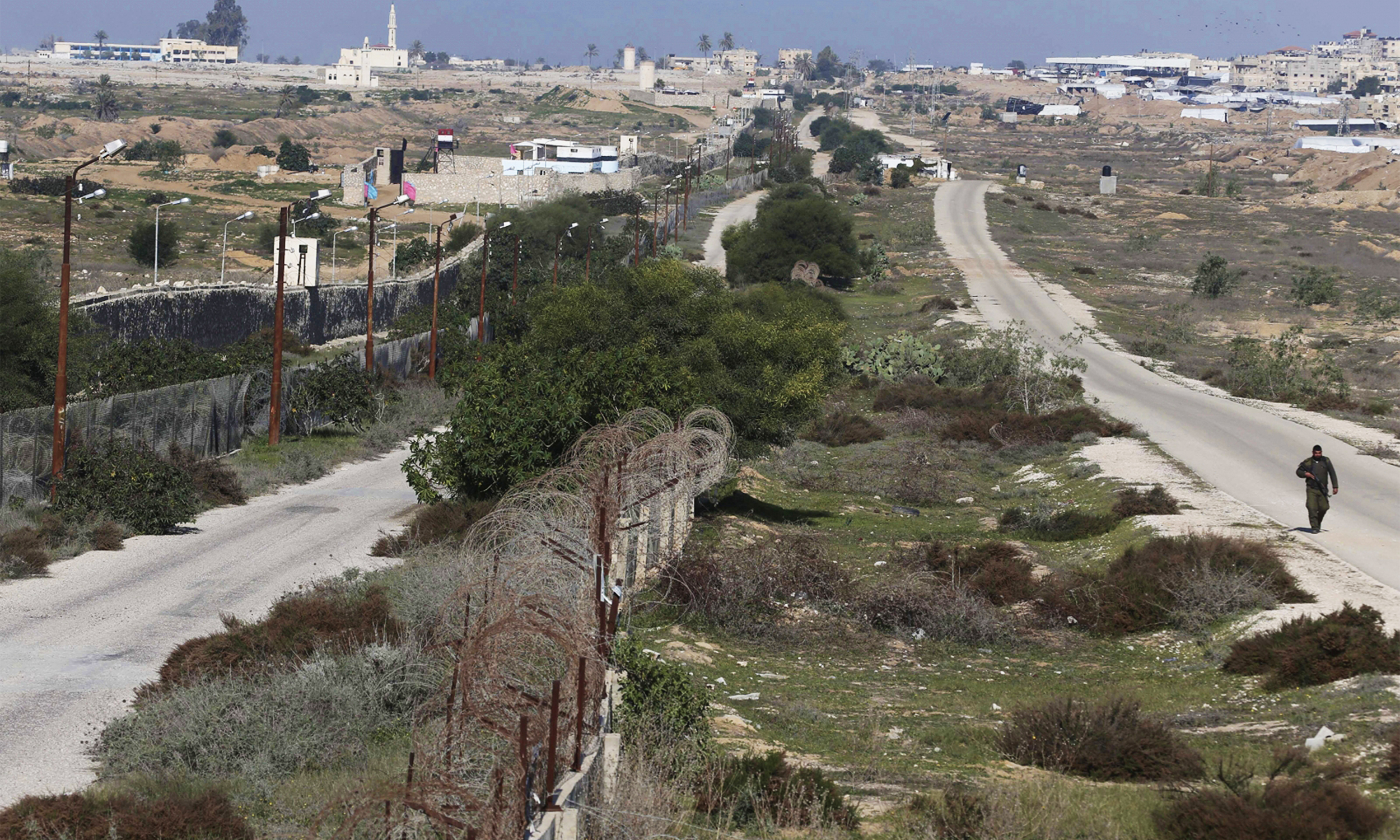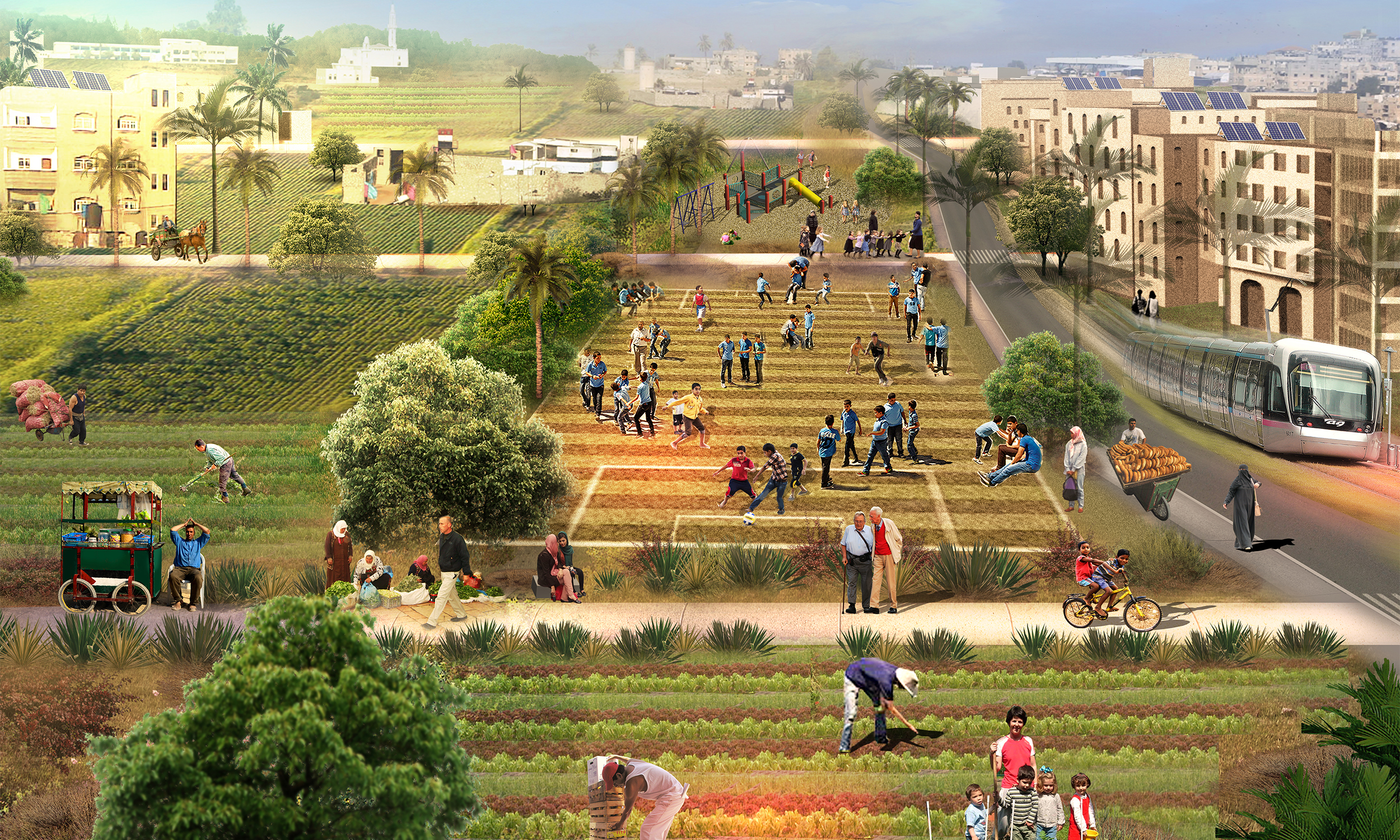Open Gaza
Open Gaza
Gaza is one of the most beleaguered environments on earth. Crammed into a space of 139 square miles (360 square kilometers), 1.8 million people live under siege. For urban scholars and designers alike, Gaza presents a unique political and ethical problem space. In 2015, Terreform brought together a large, collaborative group of architects, urban designers and social scientists to think through the problem of how this situation might be changed. Can planning, design and technology aid in advancing a more resilient and sustainable urbanism?
One thread of the project begins by imagining Gaza as a “City State” in line with both historical and contemporary models of radically autonomous environments. Whether we look to the members of the Hanseatic League or to contemporary Singapore, the idea that it is possible to achieve a very high level of independence remains attractive, even vital, as a source both of local power and control and as a medium of resistance to the destructive impacts of ethically indifferent global power. Yet we question whether the corporatized, free-trade, global environments of Dubai and Singapore can be sustainable models for independence and radical forms of autonomy.
We know from the outset that the “footprint” of Gaza extends—must extend–far beyond its present political borders and the imaginaries that confine it to its present physical boundaries. Our objective is not to elaborate a model that obliges Gaza to “live within its means” but to unpack ideas about both limits and possibilities. Through essays, colloquies, and designs we will investigate the nature of the variety and permeability of the membranes—material and immaterialthat limn both the physical and conceptual space of Gaza.
Terreform’s contribution, Re-framing Gaza, will focus on mapping possibilities for agile infrastructure capable of evading entrenched enmities and will form part of an exhibition and volume—in the company of numerous other contributions—to published by UR.




